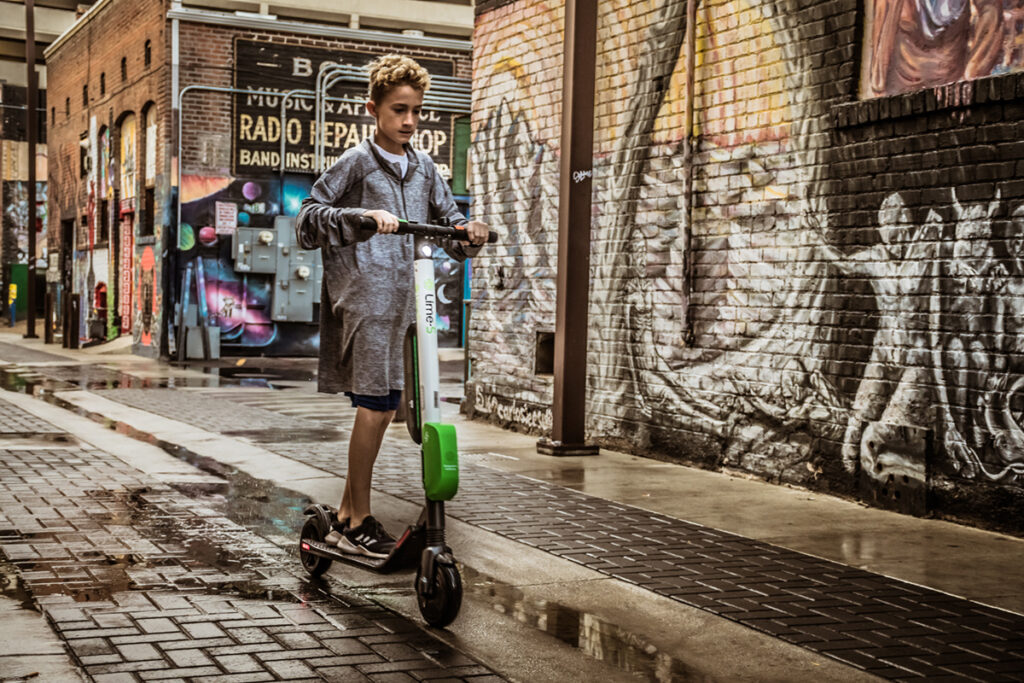*
Dear EarthTalk: What’s the environmental impact of these dockless e-scooters I see all over town now? — Jim M. Salisbury, CT
By now, you’ve certainly seen dockless e-scooters in your town or somewhere nearby. Some 85,000 of these electric-powered, phone-unlockable mini-vehicles crowd the streets and sidewalks of 100 different metro areas across the U.S. In 2018 they surpassed dockless e-bikes as the most common app-rentable transport option nationwide, with riders taking them on some 38.5 million trips.
These e-scooters are often marketed as “green” or “carbon-neutral” because they run off electric batteries instead of fossil fuels, but consumers shouldn’t think they’re getting a completely guilt-free ride. A recent lifecycle analysis from North Carolina State University assessing the “cradle-to-grave” environmental impact of e-scooters found that bicycling, walking and buses are all “greener” ways to get around.

A rider hopping on an e-scooter doesn’t necessarily think about the carbon emissions and other impacts involved with manufacturing, transporting and maintaining these otherwise low-impact electric vehicles. “If you only think about the segment of the life cycle you can see, which would be standing on the e-scooter where there’s no tailpipe, it’s easy to make that assumption,” says Jeremiah Johnson, an NC State professor and study co-author. “But if you take a step back, you can see all the other things that are a bit hidden in the process.”
While relatively light and small, e-scooters must carry a battery in addition to their basic frame and electronic systems. Producing these batteries takes a heavy toll on the environment, although no worse than similar types of batteries used in e-bikes and even electric cars. Besides the batteries, the aluminum used to create the e-scooters’ frames and the rubber for their tires add to their environmental footprint.
The NC State researchers found that about half of an e-scooter’s carbon footprint is created during production, while most of the rest (43 percent) comes from collecting and recharging them every night. In general, e-scooters are charged by freelance workers known as “juicers.” At the end of each day, they take e-scooters off the street and typically charge them up at home via their own power outlets (likely not from renewable sources). Furthermore, the majority of juicers pick up e-scooters in gas-powered cars or trucks. The upshot is that the common charging process is a long way from being carbon neutral.
That said, e-scooters are currently about twice as efficient as the average car in per passenger miles per gallon (in this case CO2 units emitted per passenger carried a distance of one mile). However, a car carrying more than one passenger can reach the same or even better levels of efficiency as an e-scooter. Buses, when fully loaded, easily beat e-scooters in per passenger efficiency, while bicycles easily beat buses.
Of course, e-scooters are sure to become more efficient in the future as both the production and pick-up processes get greener. As a consumer, you can improve the situation by using e-scooters to replace car trips, but bikes or buses are still a better choice as far as the planet is concerned.
CONTACT: “Are E-Scooters Polluters? The Environmental Impacts of Shared Dockless Electric Scooters,” iopscience.iop.org/article/10.1088/1748-9326/ab2da8.EarthTalk® is produced by Roddy Scheer & Doug Moss for the 501(c)3 nonprofit EarthTalk. See more at https://emagazine.com. To donate, visit https://earthtalk.org. Send questions to: question@earthtalk.org.
Viewers are encouraged to subscribe and join the conversation for more insightful commentary and to support progressive messages. Together, we can populate the internet with progressive messages that represent the true aspirations of most Americans.